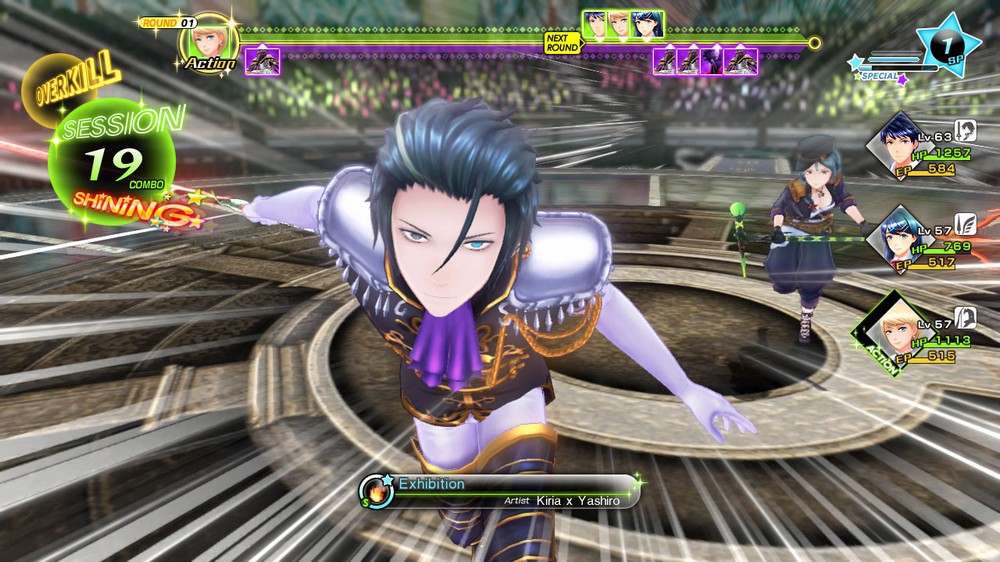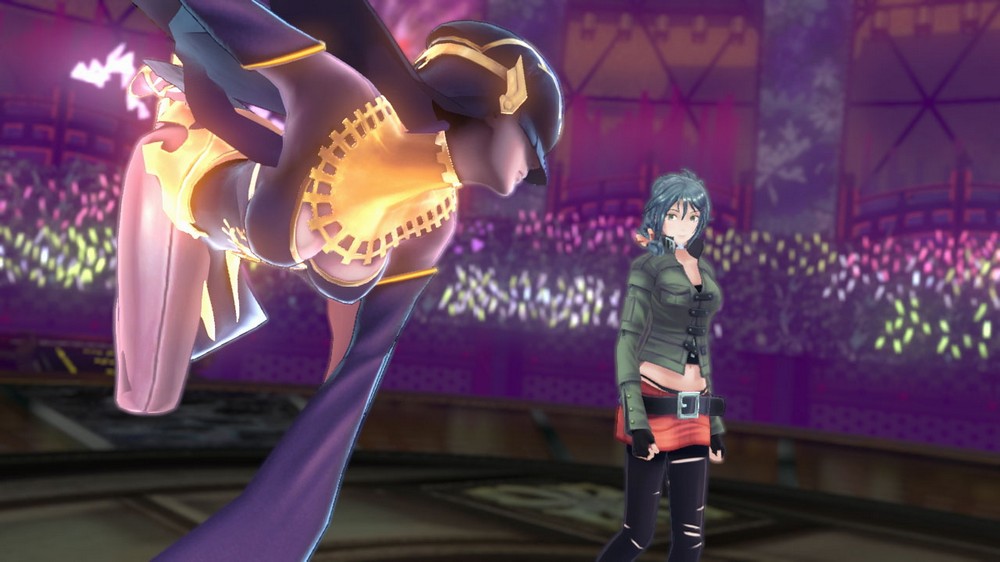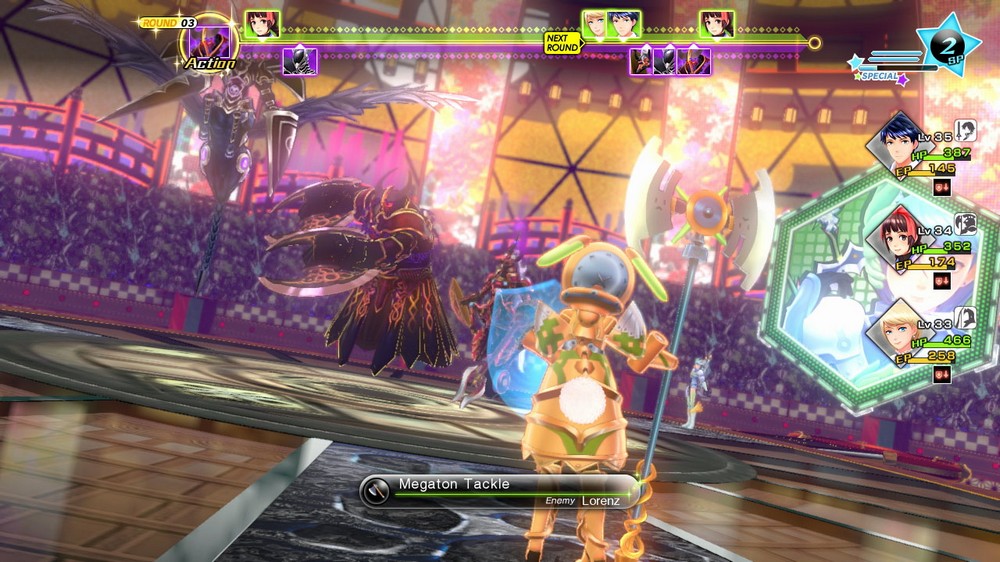Making a song and dance of it.
Life must get busy when you’re a pop star. Probably even more so when you’re also a TV personality. What about adding dancing and modeling to that CV as well? How about doing all of that whilst trying to save the world? Geez, that’s a plateful right there. Well that’s what the heroes of Tokyo Mirage Sessions #FE, the new JRPG from the people behind the SMT Persona series, have to contend with.
Set in a Tokyo where Japanese Idols are all the rage, TMS follows the exploits of Itsuki, a young man who enjoys the company of his two best friends, Tsubasa, an Idol wannabe, and Touma, a fledgling actor with the Fortuna Entertainment agency. This trio of friends find themselves at the center of a plot where dark forces intend to steal people’s Performas and take over the world. Along the way they will make new friends, battle powerful foes and learn a lot about themselves in the process.

Platform: Wii U
Price: $59.99
Multiplayer: No
If you have played Persona 4 then you will instantly recognize the game’s style – sharp, colorful and easy to navigate. From the onscreen HUD elements, to the way the menus are presented. It’s a slick look, and one that fits perfectly with the theme of the game. The world in which you explore is also similar to that found in the Persona series. The map contains all of the areas you are allowed to explore; places like Shibuya, Harajuku, the Fortuna office and many others, and gives you fast travel options for all areas. Once in a location the player is free to move about as they please, with most locations giving access to points of interest, such as shops, side quests and most importantly Idolospheres.
Idolosphere is the name TMS gives to its dungeons. Each location (except the office) has one, although not all areas and Idoloshperes are unlocked at the start of the game. They are the focal point of each story chapter, and must be conquered in order to progress the main narrative. They are not your normal type of dungeon either. This wasn’t just a case of searching each floor until I found a staircase to the next level until I reached the top. These Idolospheres all have their own puzzle element to solve in order to find the boss. These puzzles can be both mechanical and mental in their design, and required a lot more thought than I expected. By doing this, the game breaks up the monotony of standard dungeon crawling and gives each Idolosphere its own personality.
The Idolospheres are bridges between our world and the world of the Mirages. It seems that an unseen force is trying to open these Idolospheres in order to drain Performa, the part of someone that represents their talent ability. Everyone has some Performa inside them, but true Performa appears in those that have a great affinity with one of the performing arts, whether it be singing, writing, acting or even cooking. Because of this, Mirages are possessing those with great Performa in order to get a greater grip on our world, with the final goal of destroying it. However, there are some Mirages that are fighting this evil force, and in order to do this, link with our heroes to help them fight the good fight. This is where the Fire Emblem aspect of the game comes in. Although I have never played a Fire Emblem game before, I am reliably informed that these Mirages are characters from that series. Warriors such as Chrom, Cain, Virion, Thraja and Navarre all make an appearance, along with some other characters that fans of the Fire Emblem games may recognize. There isn’t a direct link to the Fire Emblem universe here, but I can imagine being a fan and thinking it was cool to see them in another world. Especially as TMS gives them plenty of screen time, as well as making them an integral part of the story.

The hero mirages lend their combat abilities to the main cast in battle. Chrom is a Knight, and as such allows Itsuki to wield a sword in battle, preferring strength over magic. Thraja is a black mage, so lends dark magic to Kiria when fighting. Each hero is linked to just one Mirage and fights in accordance to that Mirages traits. Unlike Persona, there is no swapping of Persona in order to change fighting styles. However, you can swap out any of the three cast characters during battle (except Itsuki) to suit each situation.
The battle system is where the game really sets itself apart. It operates on a turn based system, where each person in the battle gets their turn to act, one at a time. Using either a standard attack, or utilizing magic the goal is to find an enemies’ weakness; whether it be fire, ice, physical or some other type of attack. The reason finding a weakness is important is because this will trigger a Session attack. You will discover these combo attacks early on in the game, and they will be vital to obtaining victory. Have a character hit an enemy’s weakness and this will give the other two members in your party a free attack. At first it’s just a small combo bonus, but as the game progress and new abilities open up, the Sessions will include cast members not in the battle and also Duet Sessions, which not only cause high levels of damage, but can also add buffs to the cast for the remainder of the battle. By the end of the game I was performing 12-13 combo Sessions, which is a joy to behold.
Leveling up is also a little different in TMS. Of course, the main cast of characters level up through combat, and these levels will increase their base stats; such as strength, skill, speed and luck. But they also have their Stage level, which denotes how in tune with their Performa they are. Moving up their Stage levels opens up new buffs and side quests. Side quests involving cast members aren’t mandatory, but if you want to get the most out of them in battle, then I recommend doing every single one, as these missions not only give an XP boost, but also unlock new Performas. These new Performas can then be converted in to special abilities via Radiant Unity, a fusion method that will combine both Performas earned and those won in battle to create something new, such as bonuses to XP or Magic. Or even Ad-Lib performances, which randomly activate during combat to unleash a devastating attack.
Along with Radiant Unity, Carnage Unity allows each character to learn new spells and attacks. These are linked to weapons, and Carnage Unity allows for new weapons to be forged. It works in the same way as Radiant Unity does, in that you use Peformas to create these new weapons. Once created and equipped, fighting then levels that weapon up, unlocking new skills. It may seem a little overwhelming, but it actually isn’t. TMS presents it all to you at different stages in the game, then gives a simple yet informative description on how to perform these acts and why they are important. Not only is it simple to grasp, but it links in to the story nicely.

With all of those systems in place, you would think that it would deviate from the story, but that just isn’t the case. The shining light in Tokyo Mirage Sessions is the characters and the situations they find themselves in. Yes, it can be totally bonkers at time, as it sometimes is with Japanese games (especially RPGs). But even those moments just add depth to the characters here. Every cast member gets their day in the sun, with each having their own reasons for being in the business. They all have several of their own side missions that not only open up new Performas, but open up their hearts. Each character has their own unique personality and quirks. Some of them may be a little strange, but this only drew me in to the world more and encouraged me to play each and every side mission. Yes, the world of Japanese Idols may be an odd one, but it isn’t half entertaining.
Tokyo Mirage Sessions #FE isn’t just a side note in the Persona series; it is an evolution of it by taking many of the systems that people are familiar with, but enhancing them and making them more fun to use and develop. It is a master class in JRPG making, and one of the best games in the genre that I have play in a long time. Well, probably since Persona 4 Golden!
Review copy of game provided by publisher.